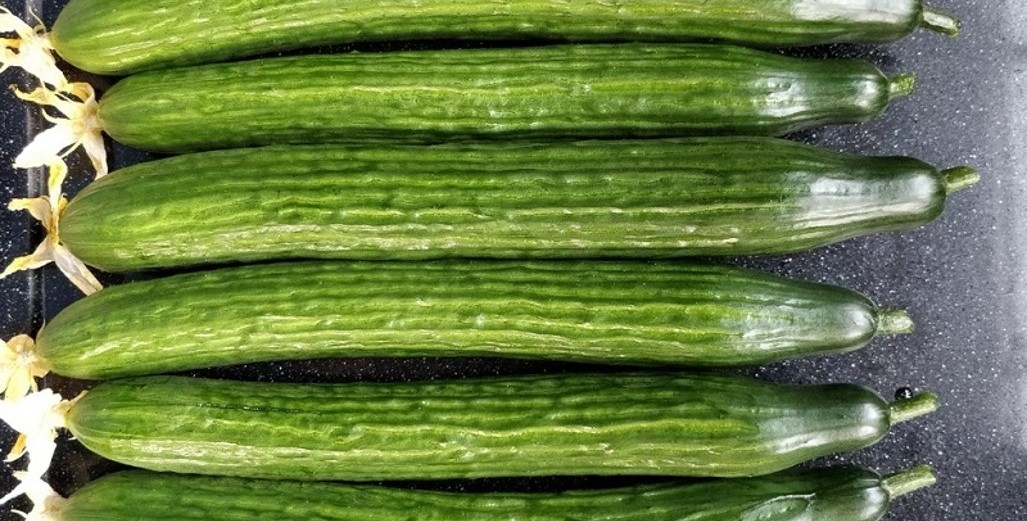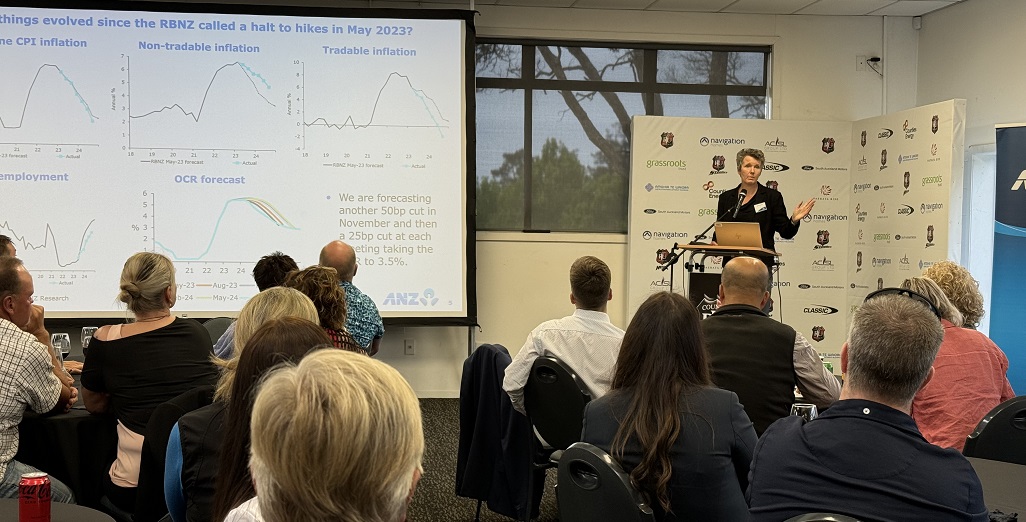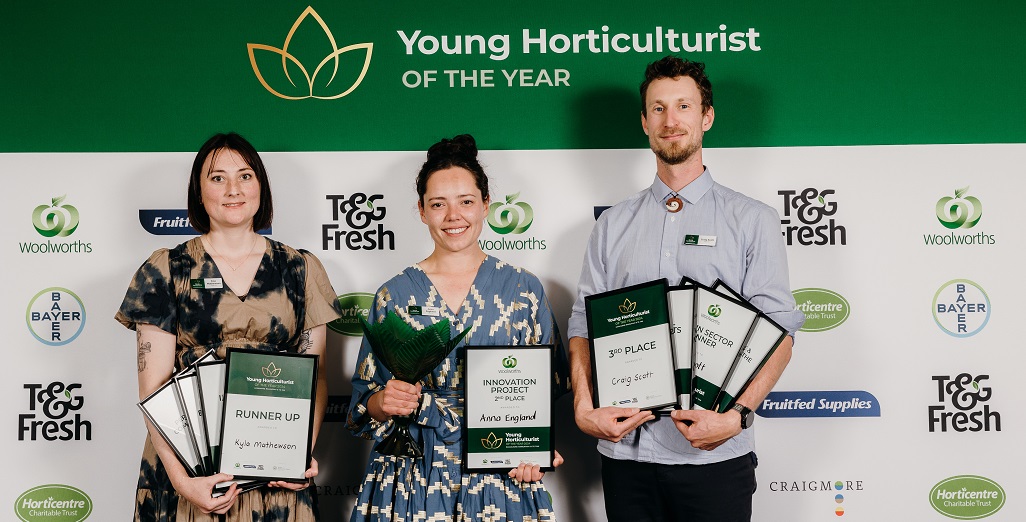Sign up here to subscribe to the Grower2grower Ezine. Every two weeks you will receive new articles, specific to the protected cropping industry, informing you of industry news and events straight to your inbox.
Feb 2021
Greenhouse Cucumber Production

Greenhouse Cucumber Production by Dr Mike Nichols
When I completed my University degree training at Nottingham University in England in 1957 I worked for a market garden (F A Secrett Ltd) just South of London for about a year. F A Secrett was considered to be the father of market gardening in England at that time and had established a modern enterprise on sandy soil just to the south of Guildford in Surrey. I worked in the greenhouses and most of my time was spent with tomatoes and cucumbers.
The cucumber production was interesting because it involved both the traditional growing method, in which specialised greenhouses were used and the plants we're grown up the insides of the house on a wire structure. The plants but grown in a mixture of loamy soil and well rotted strawy horse manure This system involved a considerable amount of labour in order to train the plants because all the cropping was based on the laterals and sub-laterals, and no fruit was allowed to develop on the main stem. In addition, all the male flowers had to be removed as these were the telegraph type of cucumber, which is parthenocarpic, and when pollinated swells unevenly.
The other system of training used was the cordon system in which the plant, were grown in soil in a traditional vinery type greenhouse, normally used for tomatoes and the plants were trained up a single string like tomatoes to the wire. Once again all the male flowers were removed and the plants cropped on the laterals which was stopped generally at two leaves and the fruit simply hung down. Irrigation and feeding was by drip irrigation.
When I arrived in New Zealand in August 1958 I discovered that the Telegraph type of cucumber was virtually unknown. I think there was one grower in Auckland growing this type and the main cucumbers grown were of the short green type and occasionally the Apple cucumber. At all times they were grown in the soil.
In England in 1962 to study for a Masters degree I found that cucumber production in greenhouses was in a state of flux. The shortage of good loam soil and of strawy horse manure was extreme, and alternatives were being sought. One approach was the to use bales of wheat straw and to use it almost like a hydroponic medium as it slowly rotted down.
On my return to New Zealand in April 1965 to lecture in horticulture at Massey University, I discovered that Massey was now growing the long Telegraph type of cucumbers.
At about this time there was a new development in greenhouse cucumber production. The first of the gynoecious (female only), varieties had been introduced. We obtained seed of the variety “Princess” from the Nunhems Seeds in the Netherlands for a trial at Massey. The seed was expensive, from memory about $1 per seed compared with the standard telegraph variety (Butchers Disease Resistor) [ BDR] which had both male and female flowers and cost about $0.10 per seed. However, in our first trial Princess produced over 2 cucumbers more per plant then BDR when cucumbers were worth about a dollar each. More importantly there were no male flowers to remove, and the fruit developed on the main stem.
One of the problems of greenhouse cucumber production at that time was the root rot disease “fusarium” so the following year we grafted the variety Princess on a fusarium resistant rootstock (Cucumis ficifolia). The grafting went well but the exercise failed because the grafting operation shocked the plant so that it became a conventional cucumber plant with male flowers up the main stem. This meant we had to remove the male flowers from the stem and crop it on the laterals which was something which we did not plan to do. Of course the more recent gynaecious cucumber far more strongly female than Princess so that this problem probably would not occur now.
Cucumber production has changed very much over the years with the development of hydroponic systems and the ability to provide the plant with water and nutrients on demand has simplified a lot of the problems that existed 50 years ago but there has not, for example, been any major changes in production methods as have occurred in tomatoes. By this I mean the development of improved training systems capable of exploiting the high light intensities of the summer, while still being able to produce satisfactory crops during the low winter light levels.
The greenhouse tomato industry does this by layering plants, so that one planting lasts a full 12 months; by controlling the fruit size with trust thinning; by grafting onto disease resistant rootstock; and by modifying the amount of leaf on the plant by increasing the number of mainstems per plant during the summer.
I suspect that a similar strategy might possible with cucumbers, for there is little doubt that cucumbers require more space per plant in the winter and can be grown at higher density during the summer months. The simplest way of achieving this might well be to use grafted cucumber plants and to increase the number of main stems per cucumber plant during the summer months in a similar way do what is done with tomatoes. What we are actually doing in horticulture is harvesting the sun and the tomato industry does this very efficiently. Fruit load could be controlled by simply controlling the number of cucumbers allowed to develop per leaf so that if the cucumbers are going to be too large you increase the numbers of fruit per plant, and vice versa — really the equivalent of truss thinning.
The only risk as I see it would be that of controlling powdery mildew and provided this can be controlled either environmentally or by soft pesticides [ bicarbonate of soda?] then a long crop would be a much more efficient way of producing cucumbers year-round.
Short green cucumbers are also able to be layered.
.jpg)
Cover photo – NZ grown telegraph cucumbers.
Article written and supplied by Dr Mike Nichols
I appreciate your comments. Please feel free to comment on the grower2grower Facebook page:
https://www.facebook.com/StefanGrower2grower/
CLASSIFIED
Subscribe to our E-Zine
More
From This Category

Light at the end of the tunnel

2024 Korean High School & University Agriculture Overseas Training Project

EPA seeks views on banning crop insecticide

Kotare Farms Features on Country Calendar

Cantabrian wins Young Horticulturist of the Year Competition






























